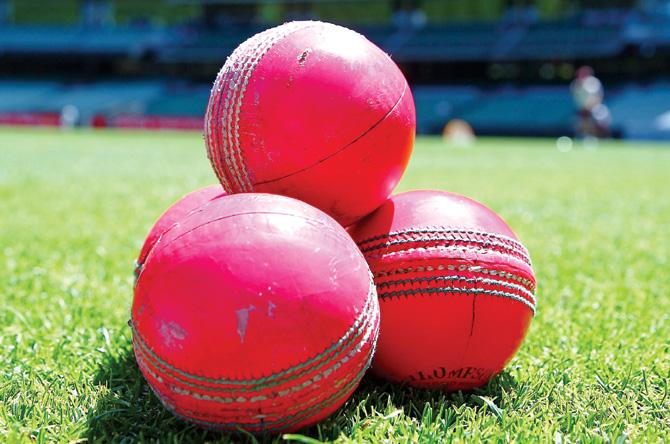There's no doubt the success of day-night Test cricket would be an enormous boost to the format but the precarious nature of the experiment is almost exclusively down to the viability of the ball, writes Ian Chappell

Pink balls used during Sheffield Shield match between Victoria and Queensland at Melbourne Cricket Ground on Wednesday
There have been far too many predictable results in recent Test series and therefore the uncertain nature of the upcoming Australia versus New Zealand contest makes it one to savour. The reasons for the difficulty in predicting a series between two neighbours — not quite as combative as India and Pakistan but still fierce rivals — are many and varied.
Pink balls used during Sheffield Shield match between Victoria and Queensland at Melbourne Cricket Ground on Wednesday. Pic/Getty Images
ADVERTISEMENT
The vast improvement in New Zealand's play, inspired by the vibrant captaincy of Brendan McCullum and a penetrating attack, is a major reason. Then there are the bulk retirements and the appointment of a new skipper leading to uncertainty surrounding the Australian squad. And finally there's the history-making first day-night Test to be played under lights using pink balls, adding to the conjecture.
Will pink ball click?
There's no doubt the success of day-night Test cricket would be an enormous boost to the format but the precarious nature of the experiment is almost exclusively down to the viability of the ball. Currently, the pink ball's approval rating among local players has slumped to the level of the Australian Opposition leader. Their doubts add to the mystery surrounding the series.
Hopefully there'll soon be a breakthrough in day-night ball manufacture, because the outcome of this experiment is too important to the future of Test cricket to fail. New Zealand's resurgence has been a triumph for positive play and swing bowling. McCullum's insistence on aggression has sometimes led to his own downfall as a batsman but the overall results have been an overwhelming success. What makes this ploy so surprising is the conservative nature of Kiwis in general and (until lately) their cricket team in particular.
The fact that the players have bought into the policy and managed a successful transition, is a tribute to McCullum's powers of persuasion and leadership. The success of the bowling attack and McCullum's captaincy are interwoven. Bowlers are more likely to experience success when backed by thoughtful, attacking fields but captains can only afford to persist with such tactics when supported by good bowling.
Whether the New Zealand duo of Trent Boult and Tim Southee will be able to swing the ball as much in Australia is doubtful but they must be encouraged by the choice of venues. The Gabba, the WACA and Adelaide Oval at night should provide favourable conditions for seam bowling and any New Zealand success will first depend on their ability to take early wickets and then to adapt when the ball isn't swinging.
Trying to thwart their endeavours will be an Australian batting line-up heavily dependent on opener Dave Warner and captain Steve Smith. This pair will prosper as batsmen and will also provide a strong leadership example to the team but it's the supporting cast who cause concern.
Chance for youngsters
Of late, Australia has relied far too heavily on aging debutant batsmen but with all the recent retirements the younger brigade now have ample opportunity to claim a permanent spot. In addition to the retirement of top order players Chris Rogers and Shane Watson, the departure of keeper Brad Haddin is critical. He's been the aggressive link between a fragile top order and a group of bowlers who bat well. His stabilising influence needs to be replaced quickly and effectively.
Smith will succeed as captain; his recent surge as a batsman is indicative of a thoughtful cricketer who is his own man. He'll receive good, aggressive input from vice-captain Warner but it's the run support from the other batsmen that will count the most. Smith can't be left to provide the bulk of the team's runs otherwise it will eventually wear him down.
It should be a close contest with Australia prevailing because the extra bounce in the pitches will expose the shortcomings of the New Zealand batsmen.
While it doesn't equal the fervent India-Pakistan rivalry, the result in Trans Tasman sporting contests matters greatly to both sides. However, in this series the balance between bat and ball in the experimental Day/Night Test will share top billing and ANY fifth day result will be looked upon by the administrators as a victory.
 Subscribe today by clicking the link and stay updated with the latest news!" Click here!
Subscribe today by clicking the link and stay updated with the latest news!" Click here!






